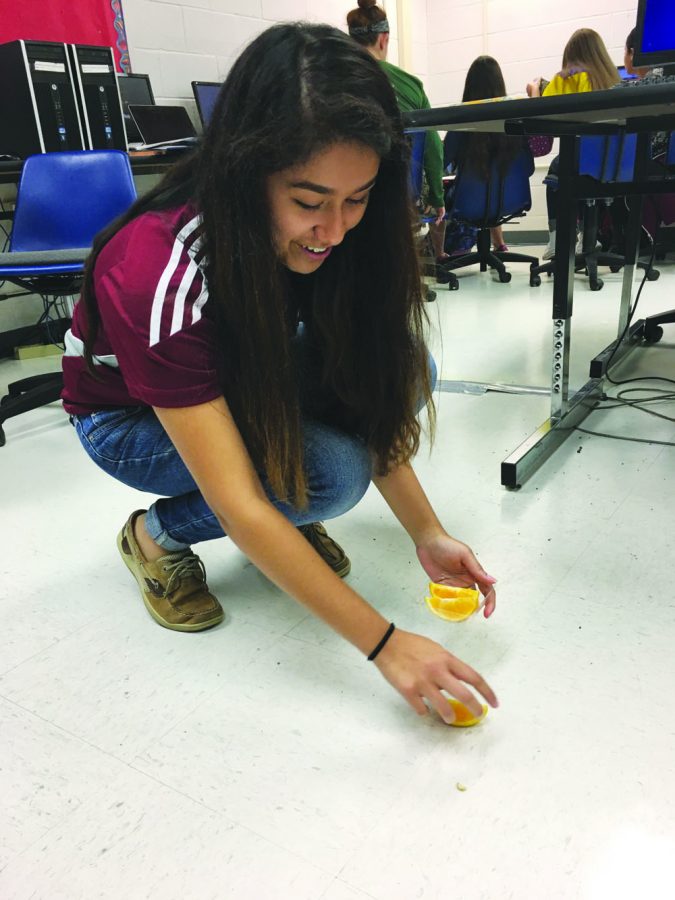Five-second rule is no longer an excuse
Research shows that food gets contaminated faster than we think
Food dropped on tile is said to collect more bacteria than food dropped on carpet.
You buy a doughnut from Shoppers and drop it on the ground, but it has only been four seconds. After making sure no one saw you, you quickly pick it up and continue to eat it. Was that the right move? According to recent studies, no it was not.
The five-second rule states that if food drops on the ground, it is safe to eat within five seconds of its contact with the floor. However, researchers at Rutgers University in New Brunswick, New Jersey recently tested this theory and discovered that it is false.
These researchers found that bacteria contamination does not occur after five seconds of contact as the five-second rule states, but can actually occur in less than one second.
Their experiment included dropping differently textured foods on multiple types of surfaces that were contaminated with a salmonella-like bacteria. Then they let the food rest on the surface for various lengths of time.
Although it turned out that if the food was exposed to the germ-filled counters for longer times the spread of germs was worse, contamination still occurred instantly.
“It depends where the food is and it depends where I am,” senior Josephine Ohene-Okae said when asked whether she follows the five-second rule or not.
“At any public restaurant I ignore [the five-second rule] because being an employee at a restaurant [myself], I know that sometimes the floors and the surfaces are not always clean to the best of their abilities,” Ohene-Okae said. “But if I am at home, I am like ‘Oh well I cleaned the floors.'”
An interesting finding from the Rutgers research was that when food is wet, it attracts more bacteria than food that is dry since bacteria is most affected by moisture. For example, their test revealed that watermelon had the most amount of bacteria while gummy candy had the least after being dropped.
Regarding the types of surfaces that food comes in contact with, the researchers’ test showed that the foods dropped on carpet were less contaminated than foods that were left on tile and stainless steel.
However, this still does not give you the excuse to eat food that you dropped on carpet! Contact with a contaminated floor will immediately transfer bacteria to the food, even though the amounts of germs will be different depending on the type of surface.
“If I drop something in the sink, I’m never going to eat it,” Ohene-Okae said. “If I drop something on the table at my house, I’ll eat it. If I drop something on the floor at my house, I might eat it.”
So next time you accidently drop food on the floor (even if it is your favorite candy bar), do not think it is safe to eat it if it has not been more than five seconds– remember that germs attach to your food instantly and it is better to be safe than sorry.

Senior Judy Nanaw is the Health Editor for the A-Blast and this is her second year on staff. Before this year, her position was a staff writer. She is...

Active member in various honor societies and clubs, senior Julie Nguyen has been on The A-Blast staff for three years. She is currently the Health Editor...






